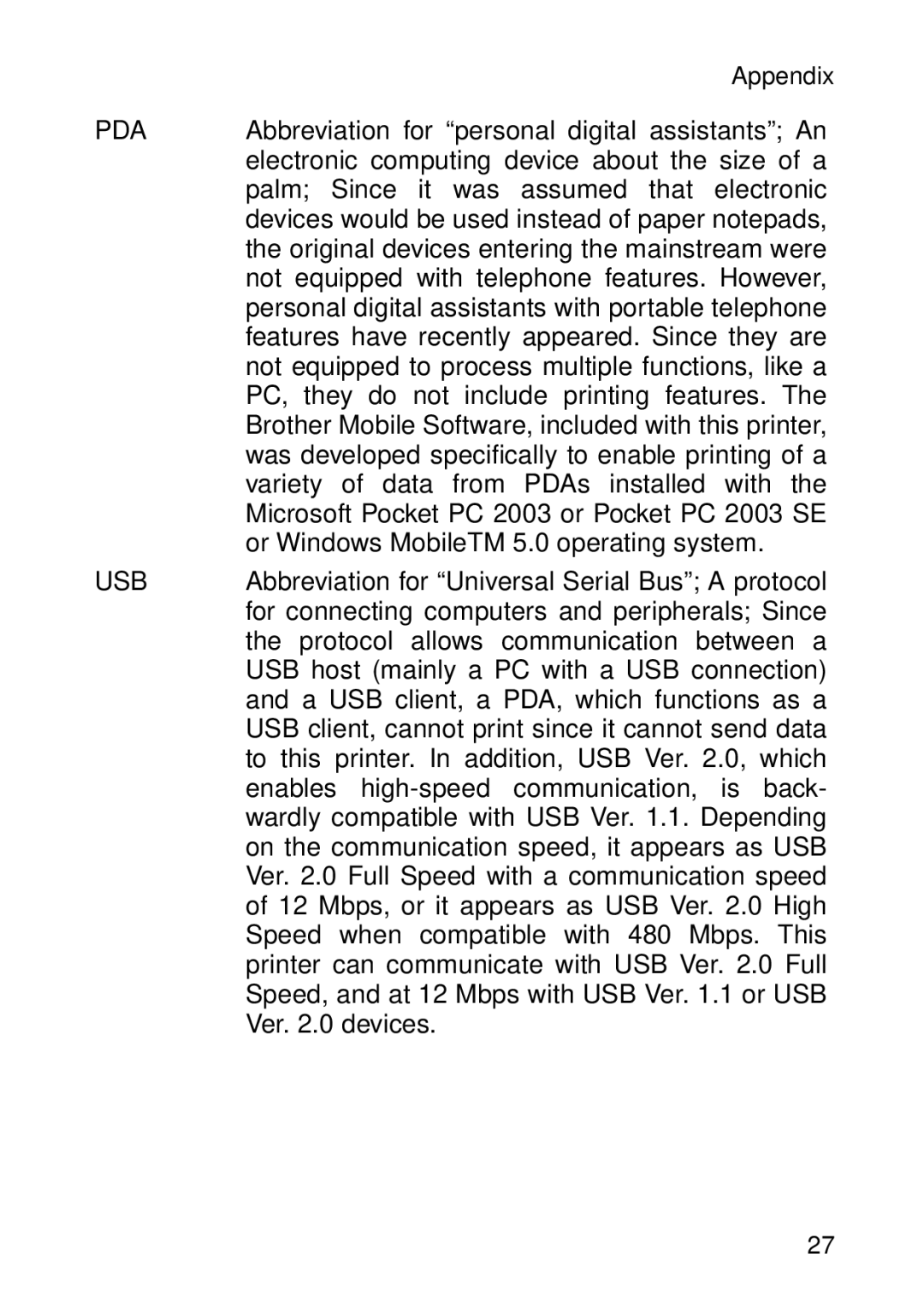| Appendix |
PDA | Abbreviation for “personal digital assistants”; An |
| electronic computing device about the size of a |
| palm; Since it was assumed that electronic |
| devices would be used instead of paper notepads, |
| the original devices entering the mainstream were |
| not equipped with telephone features. However, |
| personal digital assistants with portable telephone |
| features have recently appeared. Since they are |
| not equipped to process multiple functions, like a |
| PC, they do not include printing features. The |
| Brother Mobile Software, included with this printer, |
| was developed specifically to enable printing of a |
| variety of data from PDAs installed with the |
| Microsoft Pocket PC 2003 or Pocket PC 2003 SE |
| or Windows MobileTM 5.0 operating system. |
USB | Abbreviation for “Universal Serial Bus”; A protocol |
| for connecting computers and peripherals; Since |
| the protocol allows communication between a |
| USB host (mainly a PC with a USB connection) |
| and a USB client, a PDA, which functions as a |
| USB client, cannot print since it cannot send data |
| to this printer. In addition, USB Ver. 2.0, which |
| enables |
| wardly compatible with USB Ver. 1.1. Depending |
| on the communication speed, it appears as USB |
| Ver. 2.0 Full Speed with a communication speed |
| of 12 Mbps, or it appears as USB Ver. 2.0 High |
| Speed when compatible with 480 Mbps. This |
| printer can communicate with USB Ver. 2.0 Full |
| Speed, and at 12 Mbps with USB Ver. 1.1 or USB |
| Ver. 2.0 devices. |
27
